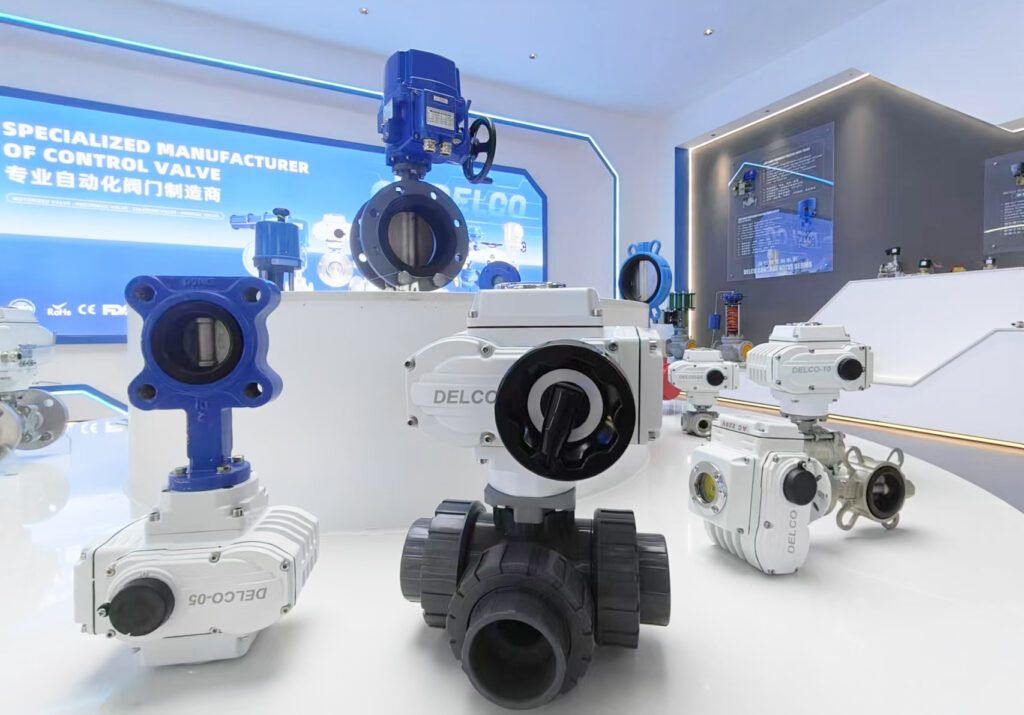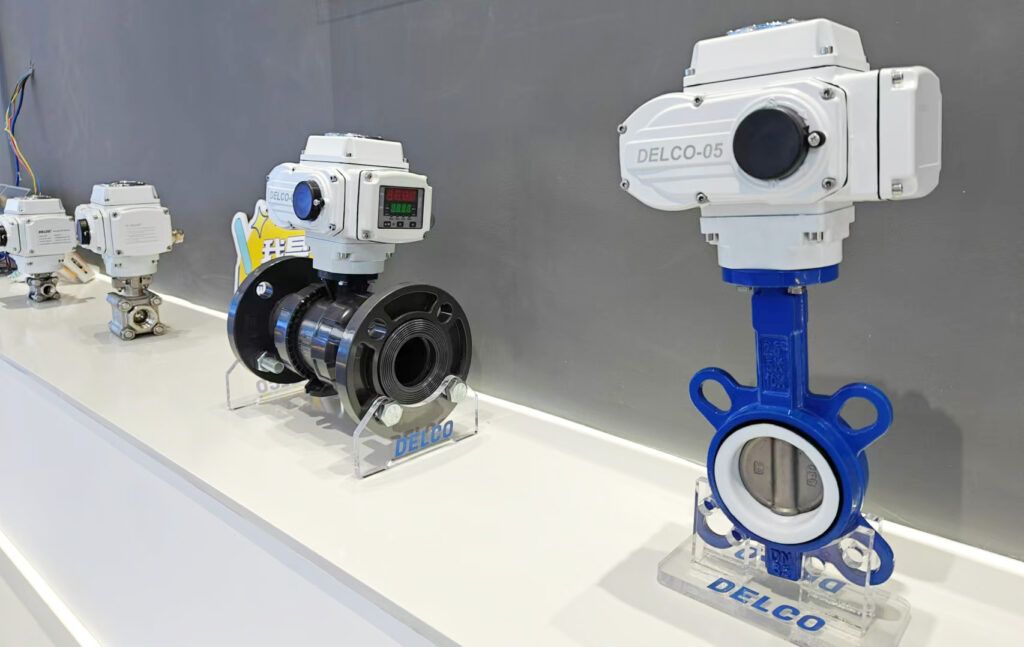BLOG
DELCO Valve Provide Various Optimal Solution For Industrial Valves, Especially For Control Valves.
TAGS
Contact Us
Motorized Ball Valve: A Comprehensive Guide
- Morning Jiang
Motorized ball valves, also known as electric actuated valves, are an essential component in many industries that require automated valve control. They offer a reliable and efficient solution to manage the flow of fluids without manual intervention. In this guide, we’ll explore the workings, applications, and benefits of motorized ball valves, specifically focusing on how they are integrated with electric actuators to streamline fluid control processes.
What Is a Motorized Ball Valve?
A motorized ball valve combines a traditional ball valve with an electric actuator, enabling automated control of fluid flow. Unlike manual ball valves, which require physical operation by hand, motorized ball valves are controlled remotely, typically through an electrical signal that powers the actuator to open or close the valve. The actuator uses an electric motor to turn the valve, providing precise control over fluid flow with minimal human effort.
When the actuator receives a control signal, it powers an electric motor that rotates the valve. This automatic process eliminates the need for manual labor and allows for more consistent and faster control, making motorized ball valves ideal for industrial automation, HVAC systems, and fluid management applications.
How Do Motorized Ball Valves Work?
To achieve automation, the motorized ball valve requires both a valve body and an actuator that can be securely mounted together. Typically, manufacturers design valve bodies with an integrally cast mounting pad, which allows for easy attachment to the actuator. This direct mounting design is common in many industrial valves, known as direct mount valves.
The electric actuator works by receiving a control signal, either in the form of a voltage or current, which energizes the motor. Depending on the configuration, the actuator can be a quarter-turn actuator, used in ball valves, or a multi-turn actuator for valves like gate or globe valves.
For ball valves, which rotate a ball to control the flow of fluids, the actuator only needs to rotate 90 degrees to fully open or close the valve. This is where quarter-turn actuators come into play. These actuators are designed specifically for valves that require minimal rotation, making them ideal for motorized ball valves.
Types of Electric Actuators
Electric actuators come in various sizes, voltages, and torque capacities. The most common voltage ranges for electric actuators are from 12V to 240V AC or DC, offering different torque capacities to suit various applications. For instance, compact actuators might have a torque rating of 17Nm, while heavy-duty actuators can deliver up to 600Nm of torque.
Some actuators, such as multi-voltage actuators, can auto-sense input voltage and regulate the internal voltage accordingly. This makes them versatile for use in different environments where voltage requirements might vary.
On/Off Ball Valves vs Positioning Ball Valves
Motorized ball valves can be categorized into two main types based on their functionality:
1. On/Off Ball Valves
On/Off electric actuated valves are designed to operate with a simple open/close function. These valves move between fully open and fully closed positions, with no intermediate stops. When the actuator receives a “close” signal, the motor starts and rotates the valve until it is fully closed. Internal cams within the actuator interact with limit switches to turn off the motor once the valve has completed its cycle.
For example, when the valve reaches the fully open or closed position, the motor is automatically de-energized by limit switches. This system ensures that the valve operates efficiently without overworking the actuator.
2. Positioning Ball Valves
In certain applications, you may need a valve to open partially or adjust to varying flow conditions. This is achieved with positioning actuators, which use digital position sensors to precisely control the valve’s position. The actuator receives an external control signal (e.g., 4-20mA or 0-10V) that adjusts the valve according to the desired flow rate.
Positioning actuators use a microprocessor to continuously monitor and adjust the valve’s position, making them perfect for applications where precise flow control is critical. A typical setup involves the actuator adjusting its position based on feedback from the sensor, maintaining the correct flow rates and pressure levels in the system.
Why Choose Motorized Ball Valves?
Motorized ball valves offer several key advantages that make them an excellent choice for automated fluid control systems:
- Precision Control: Motorized ball valves allow for precise control of fluid flow, ensuring optimal performance in complex systems.
- Reduced Labor Costs: With automated operation, there is no need for manual valve adjustment, reducing labor costs and improving system efficiency.
- Reliability: Motorized ball valves are designed to be durable and reliable, making them suitable for harsh industrial environments.
- Energy Efficiency: Electric actuators can be optimized to consume less energy compared to traditional pneumatic actuators, improving overall system energy efficiency.
- Remote Operation: These valves can be controlled remotely, allowing operators to monitor and adjust fluid flow without being on-site.
Applications of Motorized Ball Valves
Motorized ball valves are widely used in a variety of industries, including:
- HVAC Systems: For controlling heating, ventilation, and air conditioning systems to maintain temperature and pressure levels.
- Water Treatment: To regulate water flow and pressure in treatment plants.
- Oil and Gas: For controlling the flow of oil, gas, and other fluids in pipelines.
- Chemical Processing: To manage the flow of chemicals, gases, and liquids in industrial processes.
- Food and Beverage: For controlling the flow of ingredients and liquids in food production lines.
Conclusion
Motorized ball valves are an essential component in modern fluid control systems, offering a reliable, efficient, and automated solution for industries across the globe. Whether used for simple on/off applications or precise flow control, motorized ball valves provide flexibility, accuracy, and cost savings. Their compatibility with various actuator types ensures that they can be customized to meet the specific needs of each application. By choosing high-quality motorized ball valves, such as those from DELCO, industries can enhance their operational efficiency while reducing maintenance costs and improving system reliability.
By understanding the features and benefits of motorized ball valves, businesses can make informed decisions when selecting the right valve for their automated fluid control needs.



